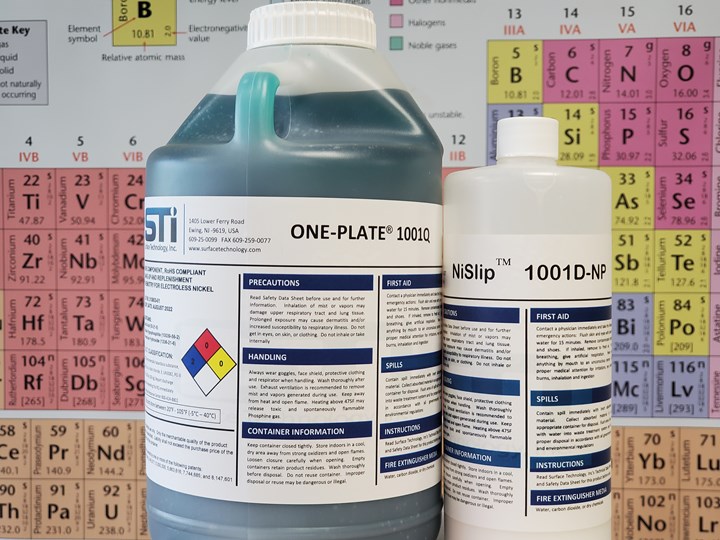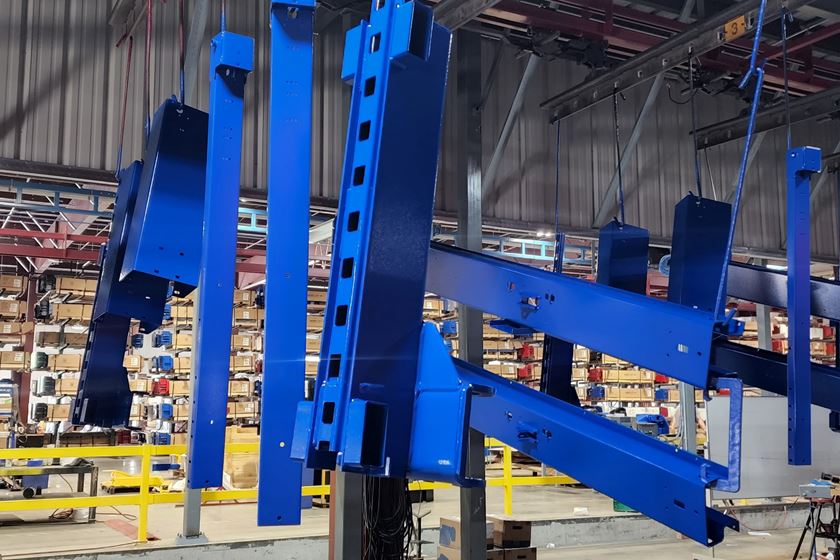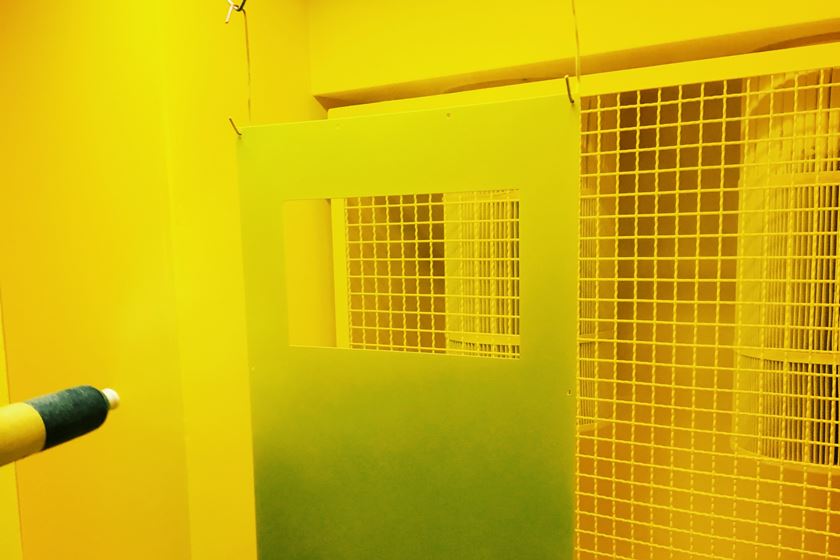Making EN-PTFE Plating Cheaper, Easier, and More Environmentally Friendly
New Electroless Nickel – PTFE system offers multiple benefits and builds upon single component EN plating concept.
Edited by Scott Francis

Surface Technology Inc.’s One-Plate Electroless Nickel – Teflon system
Innovations are valuable if they provide just one benefit. Surface Technology, Inc. (STI, Ewing, N.J.) has developed an innovative electroless nickel PTFE plating process with multiple benefits. It has cost, performance, and environmental benefits — and it builds on the recent invention of the company's One-Plate electroless nickel where just one component is needed for both make up and replenishment of the plating bath.
Historically, electroless nickel baths including those used for EN-PTFE have been made with about 20% by volume total of two components, A and B. The traditional concentration of nickel in the bath has been 6 grams per liter. A One-Plate bath is made up with just 15% by volume of just one component called “Q” (which STI named after the famous inventor in James Bond movies.) At this 15% make up, the bath has 5 grams per liter of nickel (18% less than a traditional 6 gram per liter bath). This difference makes the One-Plate cheaper to make up, reduces the amount of nickel dragged out during use, and reduces the amount of nickel wasted at the end of the bath life.
To do EN-PTFE plating, shops simply add one of STI's PTFE dispersions to a One-Plate bath. But the difference that has earned our Innovator recognition this month is that it can be done with a bath that is just a 10% make up instead of 15%, 20% or more. At a 10% make up, the bath has only 3.3 grams per liter of nickel. This approach cuts essentially in half the cost to make up the bath, the amount of drag out, and waste.
The concept of operating electroless nickel at a low metal concentration is not a new idea. A previously published article from the April 2014 issue of Products Finishing explains the concept: short.pfonline.com/sti1plate
Despite the numerous potential benefits of running at a low metal concentration, the practice has not achieved widespread popularity. The main reason reported by shops is that more frequent replenishment of the bath becomes critical to keep the metal concentration from going even lower. If the concentration of nickel and other ingredients gets too low, plating quality will suffer and the bath may become unstable. EN baths have historically been replenished with two components, A and C.
So why would a low metal concentration work with the One-Plate PTFE bath? STI president Michael Feldstein explains, “There are two main reasons: First, all EN-PTFE baths inherently plate more slowly than other EN baths. Second, replenishing with just one component makes it faster and easier.”
Together these points make the low metal system practical and advantageous. The slower plating rate means that the operator does not need to excessively monitor the concentration of the bath, and when replenishment is necessary it is much quicker with just the addition of one component instead of the traditional two A and C components. In addition, the simplicity of a single component means that a shop can use the option of a small pump to continually replenish the bath and avoid manual replenishment altogether. This option will also keep the bath at optimal concentration and performance.
This innovation provides the benefits of low metal operation on top of the other features of the One-Plate system that are important for EN-PTFE plating systems such as: medium and high phosphorous products, long bath life, RoHS compliance, no PFOA, no PFOS, and coatings up to 30% PTFE with the distinctive color of EN-PTFE.
Learn more: Read more about how second level innovation such as a practical way to do "bleed and feed" EN plating, and now low metal operation, can be built on a primary innovation like the single component EN system of STI's One-Plate: short.pfonline.com/OnePlate.
RELATED CONTENT
-
An Overview of Electroless Nickel Plating
By definition, electroless plating is metal deposition by a controlled chemical reaction.
-
Zinc Electroplating
Choosing the best process for your operation.
-
Sizing Heating and Cooling Coils
Why is it important for you to know this?
















